- 750g monkfish
- Olive oil
- 2 tomatoes
- Tomato paste
Recipes and cocktails based on Armagnac
Recettes
These recipes often feature the technique known as flambage. Flambage is a cooking process in which the alcohol is poured into a heated pan and catches on fire. This creates a special alchemy of the aromas, and requires a very good Armagnac. We recommend the 7 years of age from Château de Lacquy.
Flambage modifies the chemistry of a culinary preparation. Alcohol reaches a boil at 78°C, water boils at 100°C and sugar caramelises at 170°C. When all these elements combine and are flambéed this gives a complex chemical reaction where the surface of the burning alcohol exceeds 240°. The alcohol is both fuel and source of aromas. Depending on the recipe, flambage can be done in the pan, separately from the dish, by lighting the Armagnac heated in the pan and pouring the content over the dish, or by adding the Armagnac to the dish, bringing it to a boil and lighting the dish. We recommend using long matches to light the Armagnac. Avoid setting the kitchen on fire.
- Onion
- Garlic
- Salt
- Pepper
- Lemon zest
- 1 glass of 7-year old Château de Lacquy Armagnac
- 1 cup of bouillon
- ½ litre Chardonay
Cut the monkfish into pieces. Dredge the pieces with flour and sauté 5 minutes in a pan, in the olive oil. When the pieces are lightly browned, pour half the glass of Armagnac and flambé. Remove from the heat, put the monkfish to the side.
In the same pan, put the finely-chopped onions and the whole clove of garlic. Add more oil if needed and a small amount of the bouillon. When the onions are translucent add the finely-chopped tomatoes, a teaspoon of tomato paste, salt, pepper, the lemon peel, the rest of the Armagnac, the wine and the bouillon. Cook over a low flame for 30 minutes.
Put the pieces of monkfish in the sauce and cook for 15 minutes. Check the seasoning, serve hot.
- 4 wood pigeons,
- Coarse salt, pepper,
- Bard,
- 1 glass of Armagnac,
- bread
Pluck the feathers, singe and eviscerate 4 wood pigeons. Keep the liver, the gizzards and the hearts and put them back inside the wood pigeons.
Bard the wood pigeon, season with salt and pepper, roast them in a very hot oven for 40 minutes. Turn them and baste them during the roasting time. After 30 minutes, add water and deglaze the bottom of the pan, baste the wood pigeons.
Take the wood pigeons out of the oven. Chop the livers, gizzards and hearts and place on a toasted piece of bread. Pour the cooking juices over this. Place the whole wood pigeons in a serving dish with the toasted bread pieces. Pour the Armagnac into a saucepan, bring to a boil, light it and pour it flaming over the wood pigeons and the bread pieces, keep the flame alive by continuing to baste with the flaming juices. You need enough Armagnac to be able to keep the flame alive.
- 2 free-range chickens cut into pieces,
- Olive oil
- salt, pepper,
- 5 garlic cloves,
- 1 glass of Armagnac,
- ½ litre de vin de Chardonay,
- 1 dl red or white wine vinegar,
- 1 dl veal stock,
- 1 tablespoon tomato paste or 3 fresh tomatoes,
- Several springs of tarragon (preferably fresh tarragon)
- 4 egg yolks,
- 2 dl crème fraîche,
- 1 tablespoon of chervil, tarragon and parsley, mixed together.
Sauté the chicken pieces in the olive oil with the whole, unpeeled garlic cloves. Add the Armagnac, light on fire.
Deglaze with the Chardonnay, the wine vinegar, the veal stock, the fresh tomatoes cut into dice or the paste. Add the tarragon sprigs. This should fully cover the chicken pieces. Simmer for 30 minutes.
Remove the pieces. Scrape the bottom, bind with the egg yolks and the crème fraîche. Check the seasoning. At the last minute, place the chicken pieces back in this sauce and sprinkle the finely-chopped chervil, tarragon and parsley over the top.
- 8 quail
- Salt, pepper,
- Olive oil
- 10 cl Armagnac,
- 2 clusters of Muscat grapes, or seedless light Sultana raisins,
- Chicken stock.
If using raisins soak them in warm water with a dash of Armagnac for 5 hours. If using fresh grapes, place them in a colander and blanch them twice in a row to easily remove the skin. Remove the seeds.
Place the trussed quail (no bard required) in a cookpot that can go into the oven, or an earthenware cooking dish in which you have heated the olive oil. Season with salt and pepper. Roast for 10 to 12 minutes in a very hot oven. Remove the trussing, put back in the pot with the raisins or grapes, and a little bouillon. Bring to a boil, pour a stream of Armagnac over the preparation, and serve warm straight from the cookpot.
For a large Baba cake for 6 persons (recipe by Alain Ducasse):
For the baba:
- 500 g white flour
- 17 g fresh baker’s yeast
- 17 g honey
- 4 g salt
- 140 g softened butter
- 500 g whole eggs, beaten
For the syrup:
- 1 kg granulated sugar
- 500 g water
- Zest from one orange
- Zest from one lemon
- 1 vanilla bean, split
- 20 cl Château de Lacquy 7 years old
In the mixing bowl, using the dough hook, place the flour, crumbled yeast, the salt (keep separate from the yeast), the honey, the softened butter and half the eggs.
Begin kneading slowly to read a smooth, homogenous stage. Increase the speed (4/5 on a KitchenAid) and slowly add the rest of the eggs, kneading well between each addition.
Continue kneading until the dough comes together away from the walls of the bowl and makes a “clacking” noise. This sound is very characteristic and the dough then becomes very elastic and voluminous. It makes the clacking sound as it detaches from the bowl. This easily takes between 15 and 25 minutes.
Then place the dough on a greased sheet and let it rest for 30 min.
Grease the baking moulds and fill to 2/3 with the dough. Use a pair of scissors to cut the dough for by now it is very dense!
Let rise for 30 to 45 min in a warm place until the dough rises to the top of the moulds.
Then bake for 15 to 20 minutes at 180 C° until golden brown.
Place the granulated sugar and the water in a pot over a medium flame. Add the lemon and orange zests and the split, scraped vanilla bean. Heat, then bring to a boil, lower the flame and add the Armagnac. Remove from the heat and cool.
Don’t hesitate to pour some Armagnac over the Baba cake itself.
Cocktails
In all your cocktails you can replace dark spirits with Armagnac from Château de Lacquy and clear spirits by Folle Blanche from Château de Lacquy. Here you have a selection of recipes created especially for Lacquy.
- 4cl Folle Blanche du Château de Lacquy,
- 2 cl homemade pear syrup,
- 1cl almond milk,
- 2cl lemon juice,
- 1.5 cl strawberry basil sauce,
- verjus foam coloured blue.
In a shaker ¾-filled with ice, put the Armagnac, the pear syrup, the almond milk, the lemon juice. Delicately add the strawberry sauce at the bottom of a vintage glass, then shake and filter into the glass and decorate with the verjuice foam.
- 5 cl Armagnac du Château de Lacquy 12 years old,
- 2 cl Dame de Pique,
- 5 cl de Macvin du Jura with cardamom,
- 2 dashes bitter du maquis,
- 1 lemon zest,
- 1 cardamom.
In a mixing glass ¾ filled with ice cubs, place all the ingredients. Mix delicately with a mixing spoon. Filter into the champagne glass, twist the lemon zest above the glass and embellish with the cardamom.
- 10 cl Armagnac du Château de Lacquy 7 years old,
- 20 cl artisan-made lemonade,
- Cucumber peel,
- Sprig of fresh mint,
- Fresh ginger.
In a mixing glass place the cucumber peel and the ginger and crush at the bottom of the glass. Fill to ¾ with ice cubes, pour the Armagnac and the lemonade. Serve, decorate with mint leaves.
40ml grape eau de vie (I use Château de Lacquy's Folle Blanche)
1 tsp vermouth – a good, aromatic one (I use St Raphael Ambré, but the likes of The Collector would work well, too)
1 narrow twist unwaxed lemon zest, to garnish
Fill a chilled mixing glass with ice, pour in the eau de vie and vermouth, then stir gently at least 30 times (this helps to dilute the drink, which brings out more of its tones and flavours). Strain into a chilled glass, garnish with the lemon twist and serve.
- 50 ml Armagnac Château de Lacquy 3 ans
- 15 ml Fino Sherry
- 25 ml Fresh lemon juice
- 15ml maple syrup
- fresh ginger
In a mixing glass place the ginger and crush at the bottom of the glass. Add all the ingredients in the mixxing glas, shake et pour on a glass filled with ice cubs.
- 45 ml de Château de Lacquy 3 Ans,
- 15 ml de Fino Sherry,
- 10 ml de Chartreuse Jaune,
- 1 cuillère à soupe de verjus,
In a mixing glass 1/3 filled with ice cubs, place all the ingredients. Mix delicately with a mixing spoon. Filter into the champagne glass, twist the lemon zest above the glass.




